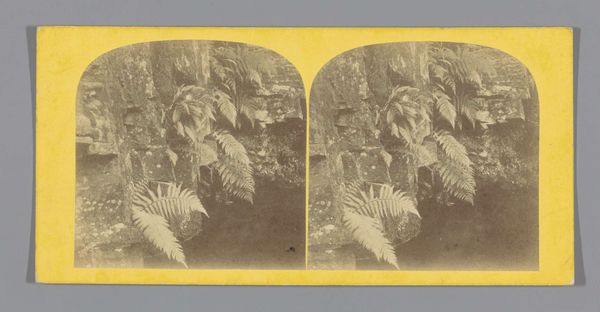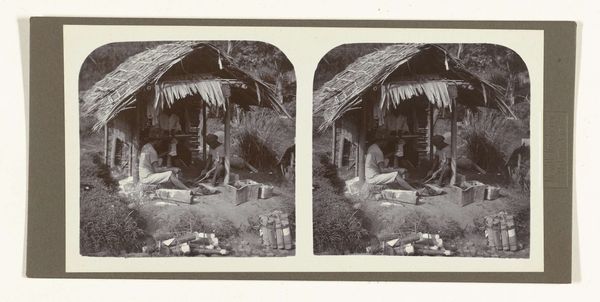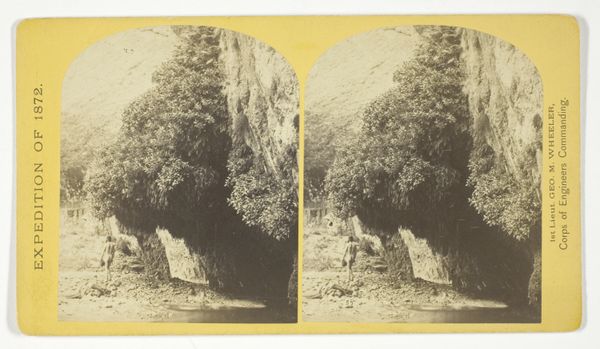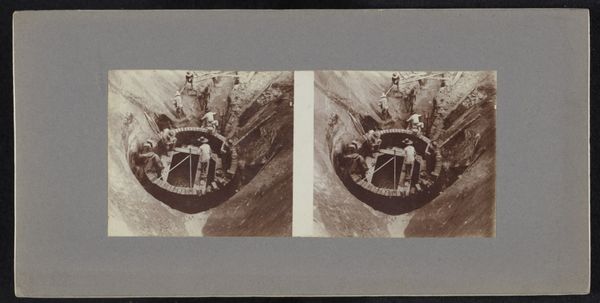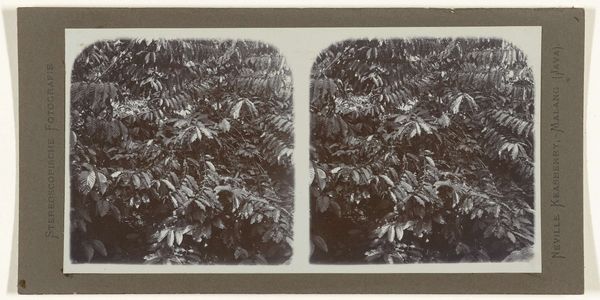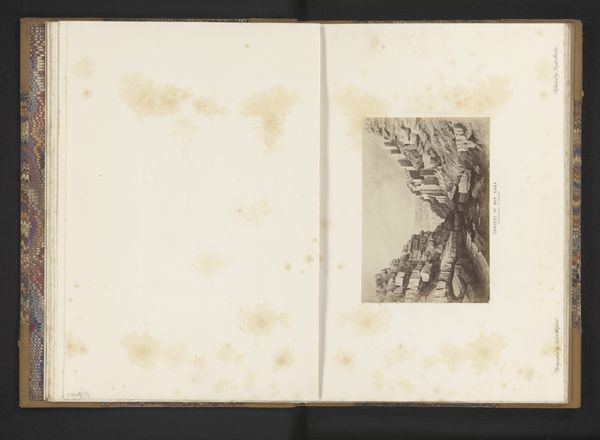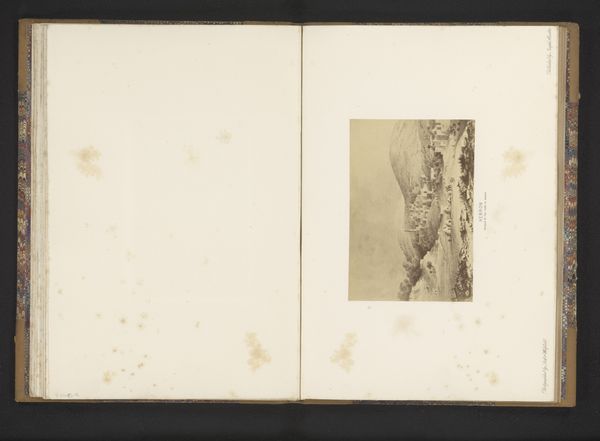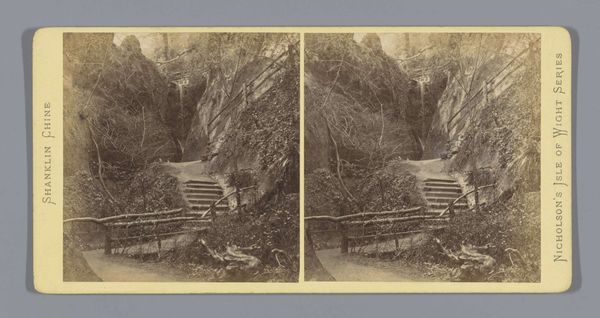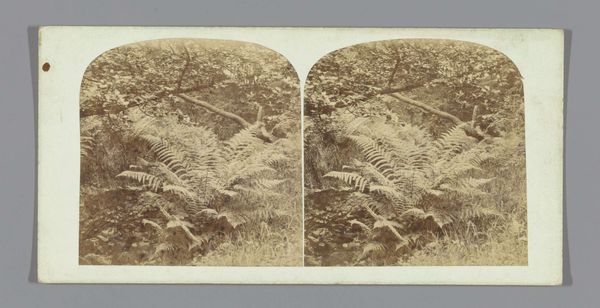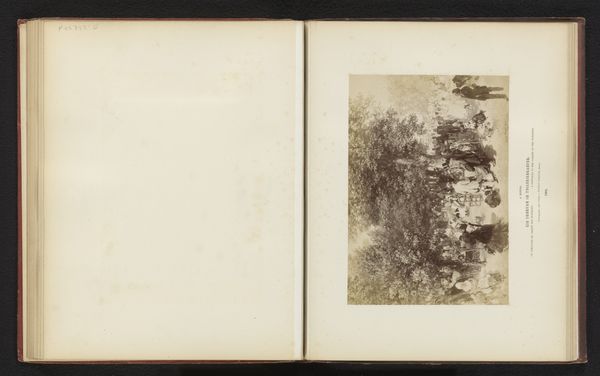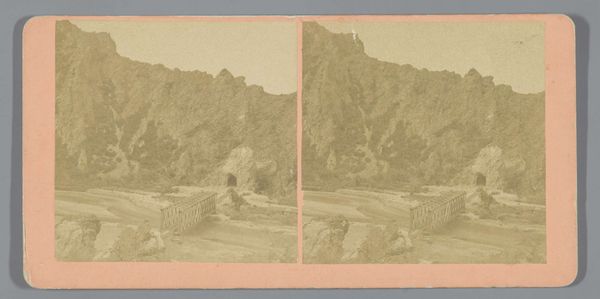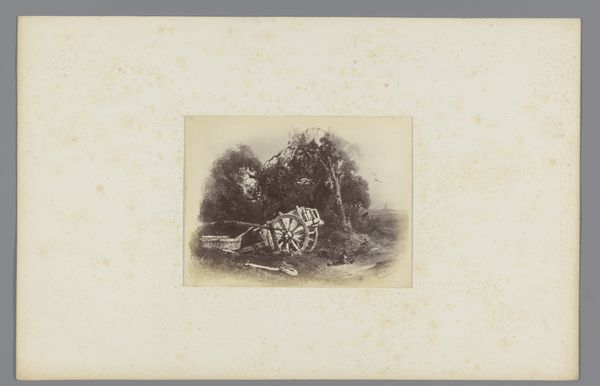
Begonia 'Hertogin van Brabant' te Chatsworth, Derbyshire c. 1855 - 1870
0:00
0:00
contact-print, photography
#
still-life-photography
#
impressionism
#
landscape
#
contact-print
#
photography
Dimensions: height 83 mm, width 165 mm
Copyright: Rijks Museum: Open Domain
Curator: Ah, what a mesmerizing specimen. Here we have a contact print dating from around 1855 to 1870, courtesy of the Manchester Photographic Company Ltd. The work captures a Begonia 'Hertogin van Brabant' in what is noted as Chatsworth, Derbyshire. Editor: It’s quite ghostly. All soft edges and muted tones, and doubled – I believe it's a stereo image, right? Meant to be viewed through a special viewer. There's an almost unsettling quality in this repetition. Curator: Precisely! It gives a stereoscopic effect. Regarding the begonia itself, historically, the Victorians had a full-blown language of flowers, where each bloom carried its own message. What might this 'Hertogin van Brabant' begonia signify, beyond just beauty? Editor: Well, if we peel back the layers of the photograph, beyond subject, date, and historical value, the tonal gradations themselves evoke a sensation of something decaying – a kind of transient beauty, if you will. See how the textures soften and blur? Curator: Yes! Texture, and even implied touch – think about the association of gardens to women in art during the Victorian age, and particularly within photographic still lives. Could it evoke notions of domesticity, cultivation, or perhaps even restriction? After all, "Hertogin van Brabant," implies nobility, stature, but the begonia remains rooted in place. Editor: Rooted and observed. Note how the composition leads our eye inward, a radial pattern reinforced by the leaves' structure. But the blur prevents true detail; we are always at a remove. Is the Manchester Photographic Company pointing to our limitations in perceiving true beauty, even in the height of the era’s technological capability? Curator: It's a very poignant read, bringing into question so many details of culture that often we would ignore from viewing only a simple photographic image. Perhaps seeing the image twice, encourages multiple interpretations to arrive closer to some kind of truth. Editor: True, what's lost in the detail could become something of clarity with a bit of questioning, not only of the flower, but the era.
Comments
No comments
Be the first to comment and join the conversation on the ultimate creative platform.
